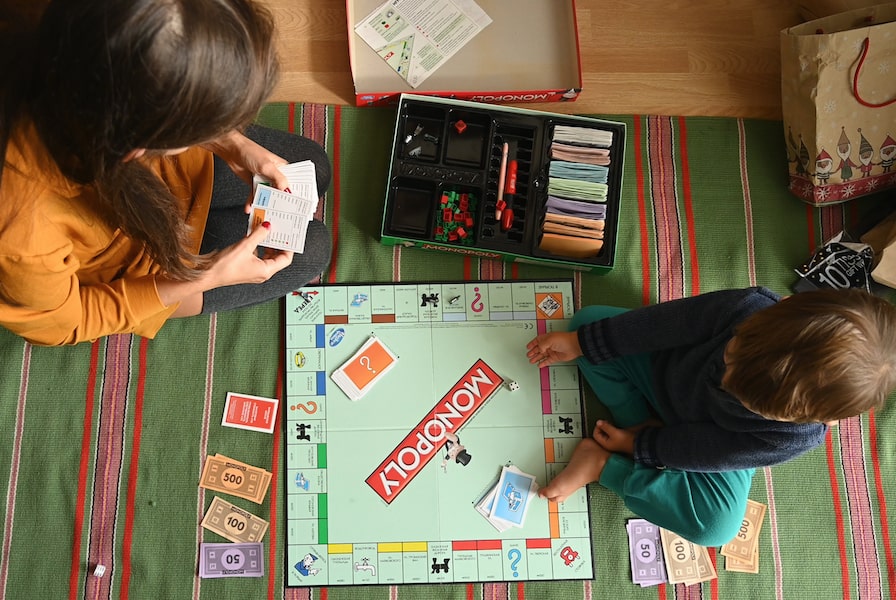How do parents explain money to kids? Finance and money management is almost absent from the school curriculum at times, even though we’re expected to live and work in a modern economy.
According to the ABC, only 40% of Australian high schools offer economics subjects, a sharp drop compared to more than 90% of schools in the early 1990s.
If we can’t rely on our schools, the job falls to us – the parents.
If our grasp on finance and economics is tenuous at best, we may be passing down bad habits and knowledge to our kids. But how can we teach our kids about money? We’ve put together a comprehensive guide to help.

Topics in this article:
Tips for teaching your kids about money
What you can do first: see a financial adviser
We all heard this growing up – ‘If you don’t know, look it up!’. Of course, pulling a dusty old encyclopedia off the shelf is a thing of the past, but the act of research and analysis remains. However, when it comes to money management, a glance at Wikipedia won’t cut it.
If you aren’t sure about money and finance, it’s best you consult a financial adviser to fill in the gaps. This is crucial if you want to give your children the best chance at a broad understanding of all things money.
Many of us think that a financial adviser is there to look at our bank statements and investments, figure out where to put what, and hopefully come out wealthier at the other end. This is partly true, but we should know how the sausage is made, too.
Financial advisers are like your old school guru when it comes to money and finance. If you come in knowing nothing about finance, economics, and money, you can pay to acquire that knowledge and set yourself up with good financial habits and other methods to safeguard your wealth. You can pass on that knowledge to your kids. A good financial adviser is worth their weight in gold.
Some financial advisers may also give financial advice to teenagers and young adults for free. Your financial adviser is always looking to expand their client base. What’s the best way to do that? A solid referral from Mum and Dad of course. Some advisers will give free prep sessions to teenagers and younger adults to help them understand some of the more advanced concepts about money and finance before they encounter them in real life.
However, if your children are a way off from booking an appointment, you can explain money to kids in easy and practical terms.
How do you explain money to kids?
If you’re telling your kids money doesn’t grow on trees and failing to explain where money does come from, it’s like reading half a bedtime story. Kids are naturally curious and want to know – where does the money come from? Why do some of their friends have pools while others don’t? When they greet hushed tones whenever parents are discussing money and finance, they grow up thinking it’s a private, never-to-be-discussed subject.
Like the birds and the bees, you don’t want them to get their information secondhand and from unreliable sources.
Of course, you won’t have to explain fiat currency and money markets in detail. The basic concepts will be good enough to start.
Kids, on a basic level, will understand working for rewards. They play video games like Fortnite, where ‘grinding’ or the performance of repetitive tasks earns new skins or emotes. The more grinding they do, the better the reward. This is exactly like working. The higher value you can provide, the more money you’re rewarded with. They also know about markets. The kid with a chocolate biscuit will have a better time trading his lunch than the kid with celery sticks. That’s supply and demand. It’s a matter of channelling these already understood concepts into financial terms, which you can reinforce and elaborate on as they get older.
According to a Finance and Economic Literacy survey conducted by Savvy in January 2020, 30% of respondents rarely or never discussed good and bad financial habits with their children; 38% have never discussed investments with their kids; 32% have never discussed superannuation.
This is a worry because every child will grow up to work and have a superannuation account in their name for retirement. If you have no idea where to start, you can always consult the kids’ section on the ASIC MoneySmart website. They have a wealth of guides and tips to get you and your children up to speed on basic money and financial concepts.
When to teach kids about saving money?
Pocket money in hand and balancing chequebooks is not the way kids will be managing money in the future.
A practical approach is needed in the medium and language they understand: apps, smartphones, and tech. You can teach kids about the value of chores and money by using apps and debit cards like Rooster Money or Spriggy. Spriggy is a debit card and smartphone app that allows kids to figure out how to budget, understand income and expenses, and gives them a bit of control over their finances.

The biggest wake-up call for a kid is wondering why they didn’t get any pocket money this week. Well, it’s because they didn’t do their chores!
Spriggy and apps like it give kids a taste of being a ‘grown-up’ and will ease them into managing their finances with apps and cards as they grow older. If they want the newest game or toy or whatever it is they have their eye on, they’ll need to balance their short-term wants for long-term needs and save their money. I’d say that apps such as these are the easiest way to teach your kids about money management and savings the hard way.
Activities to teach kids about money
Apart from online grinding, other games can help serve as learning tools. Setting up trusty old board games such as Monopoly or puzzle/mathematics games such as asking ‘how many coins makeup $5?’ work well. Try playing restaurant by giving your kids some coins, printing up a menu and having them figure out what they can afford based on what they have.
Also, remember, don’t think that saving and money management means deprivation until a rainy day. Let kids spend as they like and let them discover the ‘future you’ – if you spend all your money today, you’ll have nothing for ‘future you’, a good lesson that’ll serve them well into adulthood.

Teaching kids about property and mortgages
If your kids are a bit older, you can introduce more complex aspects of finance and money to them, especially if they’re thinking about buying their first car or even their first house.
The first thing a bank will want to give a kid is a credit card, which is a form of bad debt. Many of us think that debt is debt, but that couldn’t be further from the truth. Good debt is debt you take on as an investment, such as a house or a car or further education. Bad debt is paying for a night on the town with your credit card. Unless you’re paying off the balance before interest kicks in, you’re just throwing money away. That’s an important concept to learn for someone just about to join the full-time workforce or live out of home for the first time.
Paying close attention to market forces, watching, or reading about finance online or on TV news is integral to an adolescent’s education about property and mortgages. Setting aside time each month to discuss whether the Reserve Bank cash rate went up or down is a good habit to form in a teenager’s life.
If they’re over the age of 15 and looking for a bit of independence, having them pay for their own postpaid mobile plan will teach them about credit checks and finance.
A mobile phone provider will conduct a credit check on anyone who wants a postpaid plan. This could be the beginning of their credit history. If they have no credit history, they may have to prove their income, which is a valuable lesson for future finance applications. Once they’ve got their phone and manage the payments correctly, you can sit down with them and apply for their free yearly credit report. It gets them into the mindset that credit can follow you around, especially if you default or make late payments.
Financial literacy for life
Just like changing a flat tyre, setting up WiFi, and cooking a perfect roast are life skills that parents are more than happy to take on, financial literacy is not a valuable skill for your children to learn; it’s vital. Ingraining good habits now will set them up for financial gain instead of figuring it out – and perhaps failing – the hard way.






